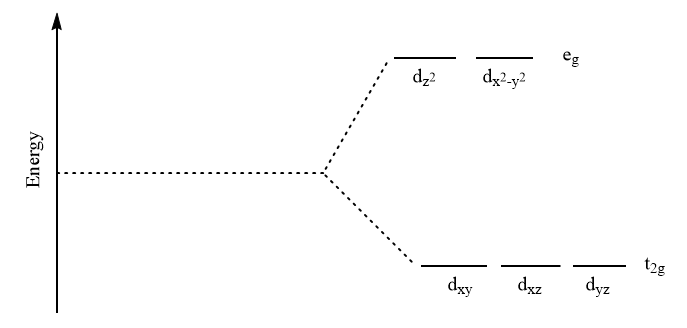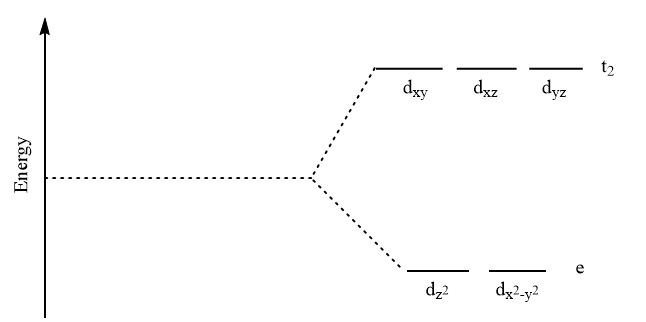
How does crystal field theory explain high spin and low spin states of complexes?
Answer
423.9k+ views
Hint: Crystal field theory explains the concept behind bonding interactions between ligands and transition metal atoms. It demonstrates the effect of attraction between positively charged metal cations and non-bonding electrons of the ligand. Degeneracy of d orbitals is observed in CFT.
Complete answer:
According to crystal field theory, the electrons which are present in the d orbital of the transition metal atom repel the electrons of ligands. Therefore, it is observed that the d-orbitals closer to the ligands will consist of higher energy as compared to those which are far away from the ligands. Thus, it results in the splitting of energy of d orbitals. The splitting of d orbitals depends on the following factors:
The nature of the central metal ion.
Oxidation state of central metal ion (higher the oxidation state, the greater will be the splitting of d orbital)
The way of arrangement of ligands around the central metal ion.
The nature of the ligand present.
The splitting of d-orbitals is different for basic structure of complexes as shown below:
For octahedral complexes, the splitting of d-orbital takes place as follows:

For tetrahedral complexes, the splitting of d-orbital takes place as follows:

Ligands which are responsible for large splitting of d orbitals are known as strong field ligands. For example,
On the other hand, the ligands like
and
Note:
After degeneracy or splitting of d orbitals, the difference in the energy of orbitals is known as crystal field stabilization energy. In simple words, it is the amount of energy through which the complex stabilizes on degenerating its d orbital.
Complete answer:
According to crystal field theory, the electrons which are present in the d orbital of the transition metal atom repel the electrons of ligands. Therefore, it is observed that the d-orbitals closer to the ligands will consist of higher energy as compared to those which are far away from the ligands. Thus, it results in the splitting of energy of d orbitals. The splitting of d orbitals depends on the following factors:
The nature of the central metal ion.
Oxidation state of central metal ion (higher the oxidation state, the greater will be the splitting of d orbital)
The way of arrangement of ligands around the central metal ion.
The nature of the ligand present.
The splitting of d-orbitals is different for basic structure of complexes as shown below:
For octahedral complexes, the splitting of d-orbital takes place as follows:

For tetrahedral complexes, the splitting of d-orbital takes place as follows:

Ligands which are responsible for large splitting of d orbitals are known as strong field ligands. For example,
On the other hand, the ligands like
and
Note:
After degeneracy or splitting of d orbitals, the difference in the energy of orbitals is known as crystal field stabilization energy. In simple words, it is the amount of energy through which the complex stabilizes on degenerating its d orbital.
Recently Updated Pages
Master Class 9 General Knowledge: Engaging Questions & Answers for Success

Master Class 9 English: Engaging Questions & Answers for Success

Master Class 9 Science: Engaging Questions & Answers for Success

Master Class 9 Social Science: Engaging Questions & Answers for Success

Master Class 9 Maths: Engaging Questions & Answers for Success

Class 9 Question and Answer - Your Ultimate Solutions Guide

Trending doubts
Give 10 examples of unisexual and bisexual flowers

Draw a labelled sketch of the human eye class 12 physics CBSE

Differentiate between homogeneous and heterogeneous class 12 chemistry CBSE

Differentiate between insitu conservation and exsitu class 12 biology CBSE

What are the major means of transport Explain each class 12 social science CBSE

What is the difference between resemblance and sem class 12 social science CBSE




